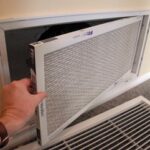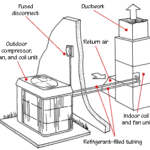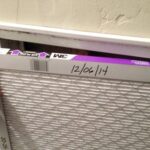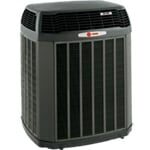What is the best heat pump? This unbiased buying guide will help you sort through the options so you can make an informed decision.
Because heat pumps heat and cool homes relatively efficiently, they have grown dramatically in popularity in recent years. Unfortunately, though most people understand how furnaces and air conditioners work, they’re less familiar with heat pumps.
This buying guide can help you become much more familiar with them in the hopes that, if you go the route of having a heat pump installed, you may be able to save significantly on your energy bill. And, if you install one with an Energy Star designation, you can qualify for a $300 tax credit.
Similar to an air conditioner, a heat pump uses refrigeration principles rather than fuel combustion to both heat and cool. In cooling mode, it acts almost exactly like an air conditioner, extracting heat from indoors and expelling it outdoors. But, when switched to heating mode, it reverses this process, drawing heat—even from cold outdoor air—to warm interior rooms.
For more about how the most common type works, see How a Heat Pump Works.
Is a Heat Pump Right for Your Home?
Whether or not a heat pump will save you money on energy bills depends on a number of factors, including your climate, the type of fuel prevalent in your area, and the amount of insulation and other energy-efficient features you have in your home.
Heat pumps are not great in cold climates. They are most effective at saving energy when in the heating mode. In a cold climate, however, your house needs more heat as the temperature outside goes down—but the heat pump works less efficiently at lower outdoor temperatures.
Below a temperature known as the “balance point,” normally from between 30 and 45 degrees F., supplementary heat is required—and that means expensive electrical heating kicks in.
In a cold climate, the general wisdom is this: If you have natural gas available, it probably makes sense for you to heat and cool with a conventional forced-air heating and air-conditioning system.
Natural gas, needed for a gas furnace, has traditionally been a more efficient, less expensive fuel than electricity—though this isn’t always the case. For more about conventional furnaces, please see How to Buy a Furnace.
But in the Northeast or other regions where fuel-oil or electric-resistance heat is more the norm, a heat pump can realize substantial savings. Although an electric-resistance furnace is much less expensive to install than a heat pump, the heat pump can deliver 1 1/2 to 2 1/2 times more heat with the same amount of energy, depending on the climate, the house, and the particular system.
The right way to decide the most appropriate form of heating and cooling for your home is to do an economic analysis based on a system’s purchase price and efficiency, the cost of your fuel, and your home’s heating/cooling load requirements.
Keep in mind that if you’re replacing an existing forced-air furnace and air conditioner with a heat pump, the ductwork may need to be replaced, too. Heat pumps generally require larger ducts.
Heat Pump Efficiency Ratings
All heating and cooling appliances carry a federal “Energy Guide” label that rates the unit’s energy efficiency for both cooling and heating modes. These ratings are based on a relative scale; they let you know how a particular model compares to other low- and high-efficiency models.

What is a SEER Rating? Manufacturers commonly use two indexes for measuring—the Seasonal Energy Efficiency Rating (SEER) for cooling and the Heating Seasonal Performance Factor (HSPF) for heating. Both are arrived at through sophisticated testing and reflect performance over an entire season.
The SEER evaluates the efficiency of the heat pump when it is in air-conditioning (cooling) mode. The ratio is calculated based on the amount of cooling generated (measured in BTUs) divided by the amount of electricity used during the cooling season. A high SEER rating indicates a more energy-efficient unit.
Minimum SEER requirements. In the United States, air-conditioning systems must be manufactured with a minimum SEER of 13. The HSPF is a more important number when it comes to warming a house. This is basically the same as the SEER but evaluates additional energy usage such as defrosting the unit during winter and back-up heat requirements.
Energy Star–qualified heat pumps have a higher SEER and HSPF than standard models; as a result, they are about 8 percent more efficient than standard new models and 20 percent more efficient than older models.
Efficient Heat Pump Options
What makes one heat pump more efficient than another? The answer is that they have a variety of options that used advanced technology to heat and deliver conditioned air. For example, the most efficient heat pumps have variable-capacity controls. Rather than running the system at full capacity all of the time, these controls coordinate the compressor and blower to adjust to your house’s heating and cooling load requirements at any given time. Because they seldom run at full speed, these heat pumps are quieter, not to mention that they save you money over the long haul.
Zoned Heating & Cooling
Zoned heating and cooling is one of the hottest new concepts in efficient energy usage. With a zoned system, you can independently control the airflow sent to various rooms or zones in your home, directing heating or cooling where you want it at various times of the day.
To make this possible, a system needs a special multizone programmable thermostat and a few motorized dampers.
For best results, the air handler’s output should be variable. In fact, it’s best if it can be controlled over an infinite range of speeds, automatically adjusting the amount of heating or cooling delivered throughout the house according to the need.
If you are in the market for a heat pump, there are several innovations to look for that have greatly improved heat-pump effectiveness:
Two-Speed Compressors
Two-speed compressors allow heat pumps to cool or heat only at the capacity needed at any given time, while heat pumps with a standard compressor can only operate at maximum capacity. This feature not only saves on energy costs, but it also reduces wear and tear on the compressor. If you have a large home with a zone-control system, a two-speed heat pump connected to automatic dampers will allow you to keep different rooms at different temperatures.
Variable-Speed Motors
Variable-speed or dual-speed motors on the blowers, outdoor fans, or both help to maintain a consistent and comfortable air velocity, also resulting in savings on your utility bill. An added benefit is a reduction in noise because the blower does not have to run at full speed at all times.
Super High Efficiency Heat Pumps
Very high-efficiency heat pumps come with a “desuperheater,” which utilizes waste heat from the pump’s cooling mode to heat water at a rate two to three times faster than an ordinary water heater.
Scroll compressors, unlike the piston compressors used in standard heat pumps, do a better job of forcing the refrigerant into smaller and smaller areas. This not only results in a longer and quieter operating life, but it also provides 10 to 15 degrees F. warmer air when in the heating mode.
Backup Burners
In addition to electric-resistance heaters as a backup in cold weather, heat pumps can also be supplemented with burners that operate on several different types of fuel. Backup burners solve the problem of providing heat during very cold weather and at a reduction in electrical costs.
Few heat-pump manufacturers incorporate both types of heat supply in one unit, but two smaller systems can share the same ductwork. This type of system can save on energy costs, depending on how expensive the combustion fuel in your area is compared to electricity.
Heat Pump Noise
When selecting a heat pump, look for a unit with an outdoor sound rating of less than 7.6 bels (76 decibels). Also, talk to the dealer about the availability of noise-reducing platforms and sound screens.
Sizing a Heat Pump
Most heat pump manufacturers make products in several sizes according to the amount of air they move. Units are designated by “tons”—a measurement that originally referred to the amount of ice needed to cool an equivalent amount of air. Typical home sizes range from 1 1/2- to 5-ton capacity.
Though sizing a system should be handled by a professional, you can get a rough idea of size by figuring about 400 square feet of living space per ton in older houses, so, a 1,600-square-foot house would normally require about a 4-ton system. Newer houses with double-paned windows and more insulation can get by with smaller systems.
Prices for materials run from just under $2,000 for small, low-efficiency models to $7,500 for top-of-the-line, high-efficiency units.
Heat Pump Refrigerants
The refrigerant a heat pump utilizes for heat transfer is an important consideration when buying a new model. Almost all major brands of heat pumps on the market today have shifted from R22—also known as freon—to more environmentally sustainable refrigerants.
R22 refrigerant is a hydrochlorofluorocarbon that is known to deplete the ozone layer and can subject the earth to harmful ultraviolet rays from the sun. It will be completely phased out of domestic use by the year 2020. Until that date, R22 is expected to become more and more expensive to obtain as manufacturers cease production and existing recycled stocks diminish.
Eco-friendly refrigerants. Other, non-harmful refrigerants have been developed and are available, but it is important to know that heat pumps that use R22 cannot be charged with the newer, safer refrigerants because the systems are not compatible.



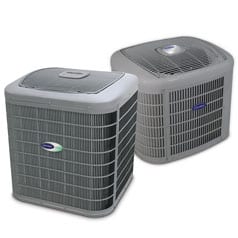
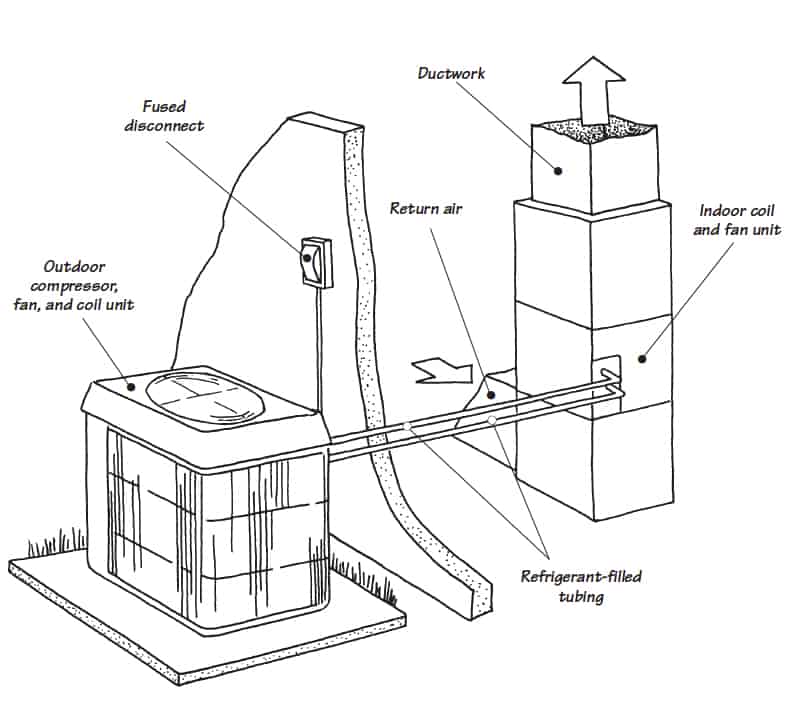
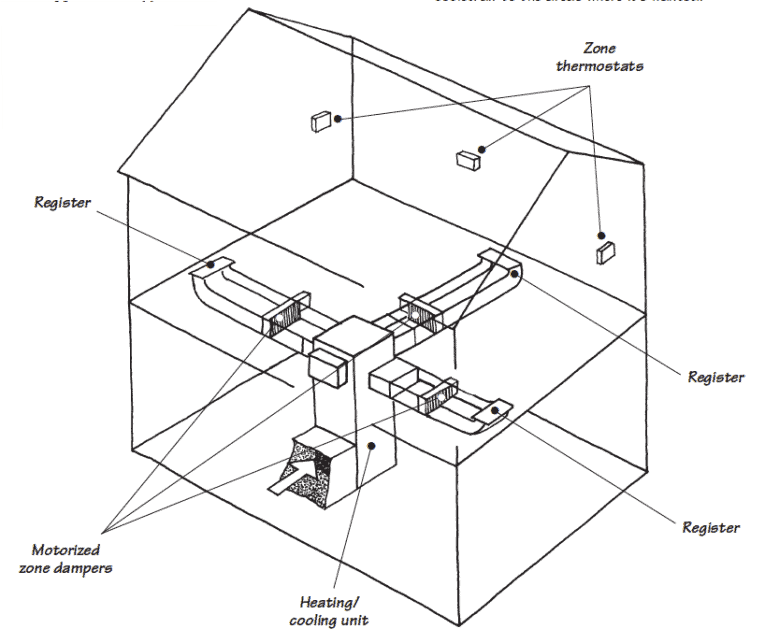
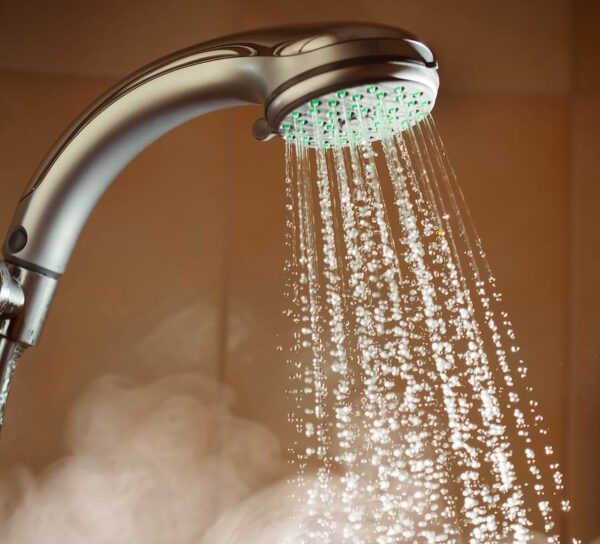



 Don Vandervort writes or edits every article at HomeTips. Don has:
Don Vandervort writes or edits every article at HomeTips. Don has:
